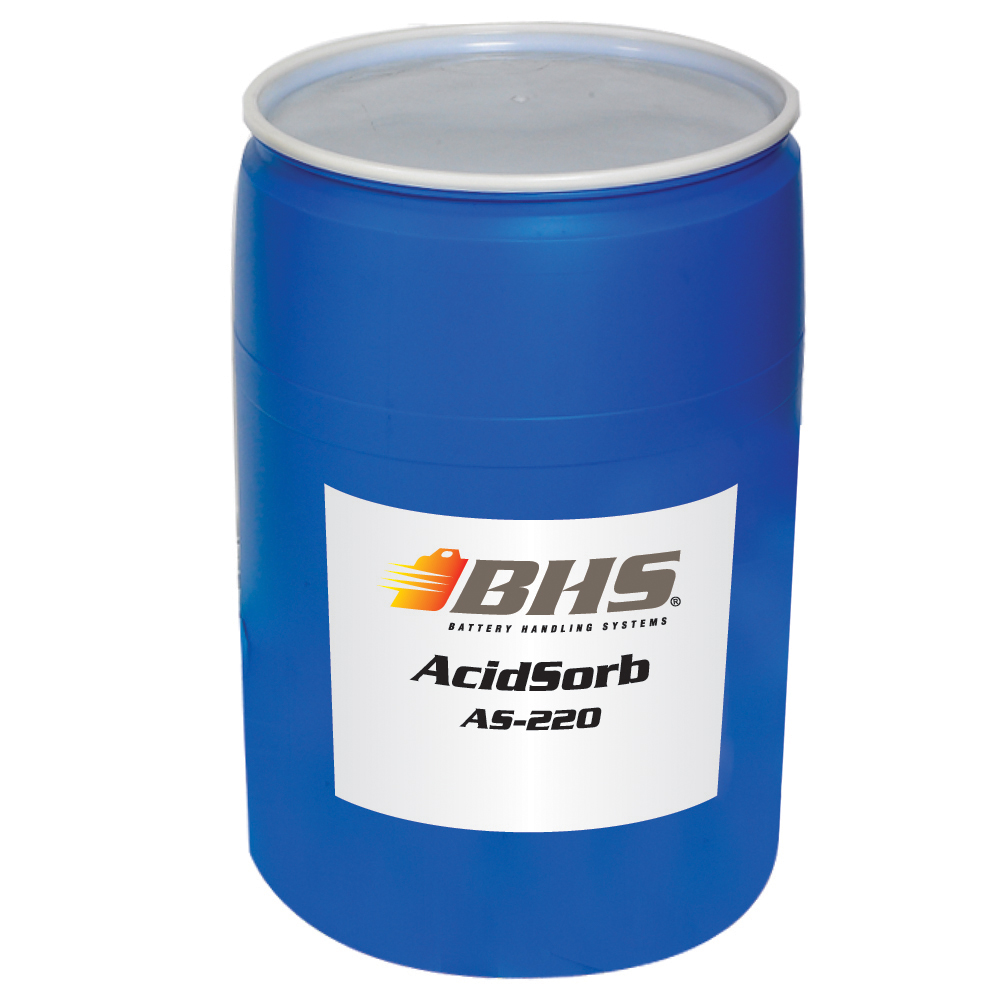We use cookies to make your experience better. To comply with the new e-Privacy directive, we need to ask for your consent to set the cookies. Learn more.
Safely Clean Forklift Battery Spills With These 9 Steps
No matter how carefully your staff handles forklift batteries, accidents happen. Every operation needs a well-rehearsed procedure for dealing with battery spills. When an employee walks into the battery room to find the floor covered in caustic electrolyte, they should know how to react.
If a forklift battery spill occurs at your facility, keep calm. Simply follow these steps to safely neutralize the lost electrolyte, protecting your workers and equipment from the hazards of battery acid:
1. Notify all personnel in the vicinity of the forklift battery spill. If necessary, evacuate the battery room and post warnings around the affected area.
2. Check and treat yourself. If you find electrolyte on your clothes, remove the garment and get into the emergency shower. Immediately flush any bare skin that comes into contact with electrolyte. The acidic mixture that powers your batteries can cause serious injury and even blindness if it gets in your eyes. Flush eyes for at least 15 minutes if they come into contact with electrolyte. OSHA requires battery handling areas to be equipped with adequate eye-wash stations, so there should be one nearby. 
3. Use an OSHA-compliant spill kit to contain the spill. A spill kit should include personal protective equipment, including goggles and a face shield, plus acid-resistant gloves, aprons, and footwear. Once you put on this protective clothing, use chemical socks to contain the spill. These should be found in your spill kit as well.
4. Neutralize the spilled acid. OSHA recommends using baking soda or soda ash (one pound per gallon of water) to neutralize the spill, but a dedicated absorbent like BHS AcidSorb will simultaneously neutralize and absorb electrolyte. This provides a faster, safer solution than traditional baking soda. Whichever neutralizing agent you choose, first apply it around the perimeter of the spill, then cover the full area.
5. Check the pH of the spill to make sure it’s neutralized. The acid is neutralized when its pH level measures between six and eight. BHS AcidSorb clearly indicates a safe pH level by changing color.
6. Soak up the neutralized spill with an absorbent material designed for the purpose, such as BHS AcidSorb sorbent, pads, or pillows. In the absence of specialized equipment, use absorbing clay.
7. Seal away used cleaning materials in an acid-resistant container. When you’re sure the acid is neutralized, sweep up all the used sorbent and dispose of it in a pail with a lid, or, if the spill is much larger, in a resealable plastic drum. Don’t just throw the container in the dumpster; store it until you contact a local environmental authority to determine the proper way to get rid of battery spill waste.
8. Clean the affected battery. Rinse all residue off of the battery and thoroughly brush beneath the battery connectors. Be sure to follow the safety procedures for washing forklift batteries, and dispose of all waste water in accordance to federal and local regulations.
9. File a full report about the spill. Inform your supervisor or warehouse manager about the spill. Your written report must provide all relevant details.
Solus Group offers a wide range of products to keep staff safe in the event of a battery spill. AcidSorb from Solus Group is available in pillows, pads, and as a granular sorbent. Liquid AcidSorb in a spray bottle makes it easy to remove acidic build-up from battery cases and stands.
For an all-in-one solution, choose a comprehensive Spill Kit from Solus Group. These products fulfill all OSHA requirements and are available in several models to meet your operation’s specific needs. Store spill kits near forklift batteries to comply with recommended Spill Prevention Control and Countermeasures (SPCC).
Even with every preventive measure in place, your operation is likely to experience the occasional forklift battery spill. When you expect a spill — and plan accordingly — you minimize the hazard for employees and prevent equipment damage. That will have a noticeable effect on your operation’s bottom line.
References:
29 CFR 1910.178, Powered Industrial Trucks. Occupational Safety & Health Administration, United States Department of Labor, n.d. Web. 13 Jan. 2016.
29 CFR 1910.151, Medical Services and First Aid. Occupational Safety & Health Administration, United States Department of Labor, n.d. Web. 13 Jan. 2016.
“Principal Emergency Response and Preparedness Requirements and Guidance.” Occupational Safety & Health Administration, United States Department of Labor, n.d. Web. 13 Jan. 2016.
